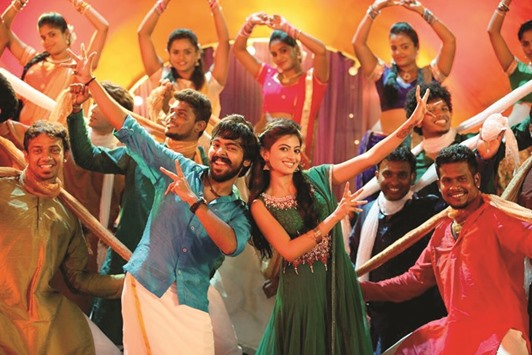Indian cinema has had in the best of times more failures than successes. I have seen princely producers reduced to paupers, landing themselves on the streets. Yet, the lure of arc lamps, the seductive stars and the sheer magic of movies have been so addictive that men have never ceased to push money into motion and movement, hoping to spin fame and fortune. There is nothing in films called once bitten twice shy. Producers are forever sticking their necks out, the hurt and humiliation merely egging people to grapple with the movie set, much like a gambler who keeps going back to the casino.
If all this was not true, how else does one explain the phenomenal number of Tamil films which are being churned out week after week, month after month and year after year — with most of them losing money.
This year, for the first six months, 106 Tamil movies were released against 102 during the same period in 2015. On the contrary, a much bigger Bollywood had only 63 new releases in the first six months this year. Karnataka, Kerala and Andhra Pradesh too had more or less the same number each as Mumbai’s.
For the lay man in Tamil Nadu, such a huge number of productions may seem like a great success story. But most of the movies lost. The big time losers in the first half of this year were those with small budgets. It is reported that only 10 films out of the 106 recovered their investments, and just three, Theri, Pichaikkaran and Rajni Murugan, made big profits.
And the Tamil cinema industry will want us to believe that one of the prime reasons for such an abysmal performance is piracy. As much as 50 per cent of a movie’s revenue is reportedly lost because illegal discs are freely available on the very day a film hits big screens. And not just this, but movies are also released online, sometimes a day before they open in theatres. Works like Idhu Namma Aaalu, 24, Thozha, Pencil and Miruthan are classic examples of this.
I admit piracy is a huge problem which the Indian film industry is not trying hard enough to tackle. Tamil Nadu and Puducherry (once Pondicherry) are the piracy capitals of India. A simple way of fighting the pirates is to weave DVD and television rights into agreements on theatrical distribution. The prices of legal DVDs must be slashed, so that one is not tempted to look into a pirate’s den. A cassette in the grey market costs between Rs 20 and Rs 40 — a price that is less than a third of a legal disk.
But I feel the real cause of Tamil movies faring so poorly is the large number of choices on any given Friday. On most weeks, three to six films open simultaneously. This means that while audiences have a wider choice, each movie will necessarily attract fewer footfalls. No family has the time or money to watch more than one film in a week — rarely two movies. And with most films out of the theatres in seven days — primarily to accommodate new releases — it is only given that a movie will find it difficult to even recover costs.
I feel that it is about time the Tamil film fraternity worked out a plan to ration the number of openings each week. It is also high time that attention shifts from quantity to quality. Surely, it is pointless churning out one bad move after another — which has become a norm.
* * *
Enakku Innoru Peru Irukku
Here is an an example of a rank bad Tamil work.
Incredible as it may sound, Sam Anton’s Enakku Innoru Peru Irukku turns its lead actors, Prakash Kumar and Anandhi into mere puppets in a tale of gang wars fought in a north Chennai locality called Royapuram. In the end, they seem like additional props for a director who appears confused about the kind of priority he wants to give to the romance and the gang wars, which for the most part is buffoonery at its worst. The film gets to be neither, and comes off as a horrible mishmash of events that often seem to have got all mixed up on the editing table.
Wading through this confusing bunch of frames, the plot in brief is all about an ageing don, Naina (Saravanan), who is out to find a successor. Who can be better to take over his little smuggling empire than a son-in-law. When Naina finds out that his daughter, Hema (Anandhi, a bright actor wasted in an innocuous role), has a lover, Johnny (Kumar), the old man considers himself lucky, not realising that the boy is incapable of drawing blood, the sight of which pushes him into a delirious fit. Into this mess, we have a villainous rival who wants to unseat Naina, and one can well imagine the way it all turns topsy-turvy.
With performances either wooden, like in the case of Kumar or exaggerated from the rest of the cast, Anton’s 130-minute movie turns into a merry-go-round with the images spinning all around it in a mindless medley of incidents.
Honestly, I found it difficult to give the film even a single star.
*** Gautaman Bhaskaran has been
writing on Indian and world cinema
for over three decades, and may be
e-mailed at [email protected]

A scene from Sam Anton’s Enakku Innoru Peru Irukku.


